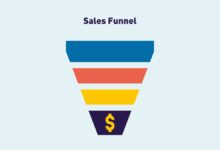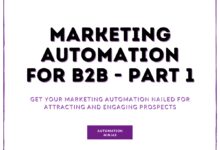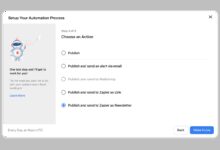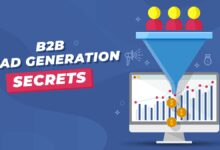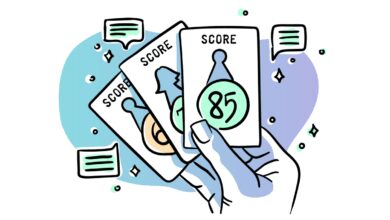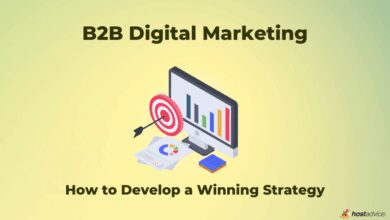Lead Generation: 7 Proven Strategies to Skyrocket Your Sales
Want more customers but don’t know where to start? Lead generation is the engine behind every successful business. It’s not just about getting names—it’s about attracting the right people who actually want what you offer.
What Is Lead Generation and Why It Matters

At its core, lead generation is the process of attracting and converting strangers into potential customers. Whether you’re running a small online store or managing a large B2B enterprise, generating leads is essential for growth. Without a steady flow of leads, sales pipelines dry up, marketing efforts go to waste, and businesses struggle to survive.
The Basic Definition of a Lead
A lead is any individual or organization that has shown interest in your product or service. This interest can be expressed in many ways—filling out a contact form, downloading an ebook, subscribing to a newsletter, or even requesting a demo. Not all leads are equal, though. Some are just browsing; others are ready to buy.
Marketing Qualified Lead (MQL): A lead deemed more likely to become a customer based on engagement level and fit with your ideal customer profile.Sales Qualified Lead (SQL): A lead that marketing has passed to sales because they’ve shown buying intent, such as requesting pricing or a consultation.Product Qualified Lead (PQL): Common in SaaS businesses, this is someone who has used your product (e.g., free trial) and shown behaviors indicating they’re ready to upgrade..
Why Lead Generation Is the Backbone of Business Growth
Without leads, there are no sales.Simple as that.But effective lead generation does more than just fill your pipeline—it builds relationships, nurtures trust, and positions your brand as a solution to real problems..
According to HubSpot, companies that excel at lead generation grow 72% faster than those that don’t. This isn’t just about volume; it’s about quality and timing. The right lead at the right moment can turn into a long-term customer.
“Lead generation isn’t about chasing every possible customer—it’s about attracting the ones who truly need you.”
Lead Generation: 7 Powerful Strategies That Actually Work
Not all lead generation tactics are created equal. Some bring in a flood of unqualified traffic, while others deliver high-intent prospects ready to convert. Below are seven proven strategies that have stood the test of time and algorithm updates.
1. Content Marketing: Attract Leads with Value
Content marketing remains one of the most effective long-term lead generation strategies. By creating valuable, educational, or entertaining content, you attract visitors who are actively searching for solutions.
- Blog posts that answer common customer questions
- Ebooks, whitepapers, and guides behind a lead capture form
- Video tutorials and webinars that require registration
For example, a financial advisory firm might offer a free “Retirement Planning Checklist” in exchange for an email address. This not only captures leads but positions the firm as an authority.
A study by Content Marketing Institute found that content marketing generates three times as many leads as traditional outbound marketing, and costs 62% less.
2. Search Engine Optimization (SEO)
SEO is the silent engine behind sustainable lead generation. When your website ranks high on Google for relevant keywords, you attract organic traffic—visitors who are actively looking for what you offer.
- Optimize landing pages for buyer-intent keywords (e.g., “best CRM for small business”)
- Create pillar content and topic clusters to dominate search results
- Use schema markup to enhance visibility in search
For instance, a company selling project management software can rank for terms like “task management tools” and capture leads through a free trial offer on the page.
According to Backlinko, the first result on Google gets 27.6% of all clicks—making SEO a non-negotiable part of any lead generation strategy.
3. Paid Advertising (PPC and Social Ads)
When you need fast results, paid advertising is your best friend. Platforms like Google Ads and Facebook allow you to target specific demographics, interests, and behaviors to generate high-quality leads quickly.
- Google Search Ads for high-intent keywords
- Facebook and Instagram lead ads with instant forms
- LinkedIn Ads for B2B lead generation
For example, a real estate agent can run Facebook ads targeting people aged 28–45 who are interested in “first-time home buying” and offer a free homebuyer’s guide.
Google Ads can deliver a median cost-per-lead of $50, but with smart targeting and compelling offers, this can drop significantly.
4. Email Marketing and Lead Nurturing
Generating a lead is only the first step. The real magic happens in nurturing. Email marketing allows you to build relationships over time, guiding leads from awareness to decision.
- Set up automated welcome sequences for new subscribers
- Send educational content that addresses pain points
- Use behavioral triggers (e.g., abandoned cart emails)
According to Campaign Monitor, email marketing has an average ROI of $42 for every $1 spent—making it one of the highest-return lead generation channels.
A well-crafted drip campaign can turn a cold lead into a warm prospect in just a few weeks.
5. Webinars and Live Events
Webinars are a powerful lead generation tool because they combine education, engagement, and conversion in one format. People who register are highly interested and more likely to convert.
- Host live training sessions on industry topics
- Offer exclusive Q&A with experts
- Use follow-up emails to nurture attendees and no-shows
A B2B software company might host a webinar titled “How to Automate Your Sales Process in 2024” and collect leads through registration. After the event, they can send a recording and a special discount to attendees.
GoToWebinar reports that 73% of B2B marketers say webinars are the best way to generate high-quality leads.
6. Social Media Engagement
Social media isn’t just for brand awareness—it’s a powerful lead generation channel when used strategically. Platforms like LinkedIn, Instagram, and Facebook allow direct engagement with potential customers.
- Use lead generation forms on Facebook and LinkedIn
- Run contests and giveaways that require email entry
- Engage in niche communities (e.g., Reddit, Facebook Groups)
For example, a fitness coach can post daily tips on Instagram, then direct followers to a free workout plan in exchange for their email.
Social media lead generation works best when combined with strong content and clear calls-to-action.
7. Referral and Partner Programs
One of the most underrated lead generation strategies is leveraging existing customers and partners. People trust recommendations from friends, family, or trusted brands.
- Launch a customer referral program with incentives
- Partner with complementary businesses for co-marketing
- Offer affiliate commissions for leads that convert
A SaaS company might offer $100 for every new customer referred by an existing user. This not only generates leads but increases customer loyalty.
According to Nielsen, 92% of consumers trust referrals from people they know—making this a goldmine for quality leads.
Lead Generation Tools and Technologies You Need
Running a successful lead generation campaign requires the right tools. From capturing leads to nurturing them, technology can automate and scale your efforts.
CRM Systems for Lead Management
A Customer Relationship Management (CRM) system is essential for organizing, tracking, and converting leads. It acts as the central hub for all customer interactions.
- HubSpot CRM: Free, user-friendly, and integrates with marketing tools
- Salesforce: Powerful for large teams with complex sales cycles
- Zoho CRM: Affordable with strong automation features
With a CRM, you can score leads, assign them to sales reps, and track follow-ups—ensuring no opportunity slips through the cracks.
Marketing Automation Platforms
Automation saves time and increases consistency. Marketing automation tools help you send the right message to the right person at the right time.
- Mailchimp: Great for email campaigns and basic automation
- Klaviyo: Ideal for e-commerce lead nurturing
- ActiveCampaign: Advanced automation with behavioral tracking
For example, you can set up an automation that sends a series of educational emails to a lead who downloaded your guide, then offers a free consultation after the third email.
Lead Capture and Landing Page Tools
Your landing page is often the first real interaction a lead has with your brand. It needs to be fast, clear, and compelling.
- Unbounce: Drag-and-drop builder for high-converting landing pages
- Leadpages: Templates designed for lead capture
- Instapage: Advanced A/B testing and personalization
These tools allow you to create forms, pop-ups, and sticky bars that capture leads without requiring coding skills.
Lead Generation Funnel: From Awareness to Conversion
A successful lead generation strategy follows a funnel structure. Understanding each stage helps you create the right content and offers.
Top of the Funnel (TOFU): Awareness
This is where prospects first become aware of their problem—and your brand. Content here should be educational and non-promotional.
- Blog posts
- Social media content
- YouTube videos
Example: A cybersecurity company publishes a blog titled “5 Signs Your Business Is at Risk of a Data Breach.” The goal is to attract readers, not sell.
Middle of the Funnel (MOFU): Consideration
At this stage, leads know they have a problem and are researching solutions. Your content should compare options and highlight your strengths.
- Ebooks and whitepapers
- Case studies
- Webinars
Example: Offer a downloadable guide: “How to Choose the Right Cybersecurity Solution for Your Business.” Capture the lead with a form.
Bottom of the Funnel (BOFU): Decision
These leads are ready to buy. Your content should make it easy for them to choose you.
- Free trials or demos
- Pricing pages
- Customer testimonials
Example: Invite leads to a personalized demo of your software. This direct interaction can close the deal.
Lead Generation Metrics That Matter
You can’t improve what you don’t measure. Tracking the right metrics helps you optimize your lead generation efforts.
Conversion Rate
This measures the percentage of visitors who become leads. A high traffic volume means nothing if no one converts.
Formula: (Number of Leads / Number of Visitors) × 100
Industry average conversion rates vary, but WordStream reports an average of 2.35% across industries. Top performers achieve 5% or higher.
Cost Per Lead (CPL)
How much are you spending to acquire each lead? This is crucial for budgeting and ROI analysis.
Formula: Total Campaign Spend / Number of Leads Generated
For example, if you spend $1,000 on Facebook ads and get 50 leads, your CPL is $20.
Lead-to-Customer Conversion Rate
Not all leads become customers. This metric tells you how effective your sales team and nurturing process are.
Formula: (Number of Customers / Number of Leads) × 100
Aim for at least 10–20%, depending on your industry and offer.
Common Lead Generation Mistakes to Avoid
Even smart marketers make mistakes. Here are the most common pitfalls in lead generation—and how to avoid them.
Targeting the Wrong Audience
If you’re attracting the wrong people, your conversion rates will suffer. Be specific about your ideal customer profile (ICP).
Solution: Create buyer personas based on real data—demographics, pain points, goals, and behavior.
Offering Weak Lead Magnets
A generic “subscribe to our newsletter” won’t cut it. Your lead magnet must solve a real problem.
Solution: Offer high-value content like templates, checklists, or free tools that save time or money.
Ignoring Lead Nurturing
Most leads aren’t ready to buy immediately. If you don’t nurture them, they’ll forget you.
Solution: Set up automated email sequences that provide value over time and gradually introduce your product.
Lead Generation Trends in 2024 and Beyond
The world of lead generation is evolving fast. Staying ahead of trends ensures your strategy remains effective.
AI-Powered Personalization
Artificial intelligence is transforming how we personalize content and offers. AI can analyze user behavior and deliver tailored experiences in real time.
- Dynamic website content based on visitor profile
- AI chatbots that qualify leads 24/7
- Predictive lead scoring to prioritize follow-ups
Companies using AI for personalization see up to 10–15% increases in revenue.
Privacy-First Lead Generation
With stricter data laws (GDPR, CCPA) and the deprecation of third-party cookies, marketers must adapt.
- Focus on first-party data collection
- Be transparent about data usage
- Offer value in exchange for consent
The future belongs to brands that earn trust, not just capture data.
Rise of Conversational Marketing
People want instant answers. Chatbots, live chat, and messaging apps are becoming key lead generation tools.
- Use chatbots to qualify leads and book meetings
- Engage visitors with proactive messages
- Integrate with CRM for seamless handoff
According to Drift, 64% of consumers expect real-time responses from businesses.
How to Build a Lead Generation Plan That Works
Success doesn’t happen by accident. You need a clear, step-by-step plan tailored to your business.
Step 1: Define Your Target Audience
Start with research. Who are your ideal customers? What are their pain points? Where do they spend time online?
Create detailed buyer personas to guide your messaging and targeting.
Step 2: Choose the Right Channels
Not every channel works for every business. A B2B company might focus on LinkedIn and SEO, while a DTC brand thrives on Instagram and Facebook ads.
Test a few channels, measure results, and double down on what works.
Step 3: Create High-Value Offers
Your lead magnet should be irresistible. Think: free trial, consultation, template, or exclusive content.
Make sure it aligns with your audience’s stage in the buyer’s journey.
Step 4: Optimize for Conversion
Even the best offer fails if your landing page is weak. Focus on clarity, speed, and trust signals (testimonials, security badges).
Run A/B tests on headlines, CTAs, and form length to improve conversion rates.
Step 5: Nurture and Follow Up
Only 2% of leads convert on first contact. The rest need nurturing.
Use email, retargeting ads, and personalized content to stay top-of-mind.
What is lead generation?
Lead generation is the process of attracting and converting strangers into potential customers by capturing their interest in your product or service, typically through offers like free downloads, trials, or consultations.
What are the best lead generation strategies?
The most effective strategies include content marketing, SEO, paid advertising, email marketing, webinars, social media engagement, and referral programs. The best approach depends on your audience and industry.
How do I generate high-quality leads?
Focus on targeting the right audience, offering valuable lead magnets, using lead scoring, and nurturing prospects with personalized content. Quality over quantity always wins.
What tools are essential for lead generation?
Key tools include CRM systems (HubSpot, Salesforce), marketing automation platforms (ActiveCampaign, Mailchimp), and landing page builders (Unbounce, Leadpages).
How do I measure lead generation success?
Track metrics like conversion rate, cost per lead, lead-to-customer rate, and ROI. Use these insights to refine your campaigns and improve performance.
Lead generation is not a one-time task—it’s an ongoing process that fuels business growth. From creating valuable content to leveraging AI and automation, the strategies outlined here provide a roadmap for attracting, nurturing, and converting high-quality leads. The key is consistency, testing, and a customer-first mindset. Start small, measure results, and scale what works. With the right approach, your lead generation engine will run smoothly for years to come.
Further Reading:

